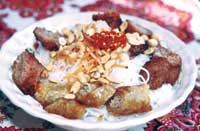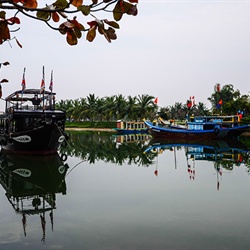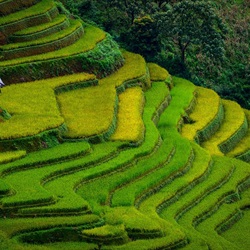More than 500 cultural researchers and culinary specialists participated in a seminar on Vietnamese cuisine at the Sheraton Saigon Hotel on October 30.
More than 500 cultural researchers and culinary specialists participated in a seminar on Vietnamese cuisine at the Sheraton Saigon Hotel on October 30.
Participants, many of whom are working for foreign and local hotels and restaurants, shared their experiences in the hospitality industry at the Vietnamese Culinary Culture seminar, which was organised by the HCM City School of Hotel and Tourism.
They talked about traditional dishes like pho (noodle soup), bun (rice vermicelli) and nem or cha gio (spring roll), which are popular worldwide and offer a palatable venue learn for curious foreigners to know more about Viet Nam and its people.
They also discussed why and how to promote traditional Vietnamese cuisine to the world.
"To Vietnamese people, culinary art is culture," said Tran Van Khe, a Vietnamese-French music professor who has spent years researching traditional Vietnamese music and culture.
"By eating a dish created originally by Hanoians or Saigonese, you will learn more about their lifestyle and customs," he said.
Khe believes Vietnamese cuisine should be introduced more at home and abroad because, "It could be one of the country’s best national brandnames," he said.
Basic tastes
"Many Vietnamese dishes are flavourful because they include four tastes, sweet, sour, salty and bitter, that come from traditional spicy materials," said nutritionist Bui Thi Minh Thuy, director of HCM City University of Technical Pedagogy’s Department of Food Technology.
She talked about the elements that make Vietnamese dishes delicious and nutritious, including dishes that can improve people’s health.
For instance, chao (rice porridge) served with ginger is a treatment for colic and dishes with green onions and perilla are best for treating influenza.
"To eat right, you have to be trained," said Thuy, who has more than 10 years experience experience in nutrition study.
Thuy’s foreign colleague, Yoko Asakura, a member of the International Glutamate Information Services, shared research findings on umami, which some say is the sixth basic taste.
A hundred years ago, a Japanese professor named Kikunae Ikeda at
Umami is founded in many traditional dishes in Asian cultures such as
Source: VNS









.png)










COMMENTS